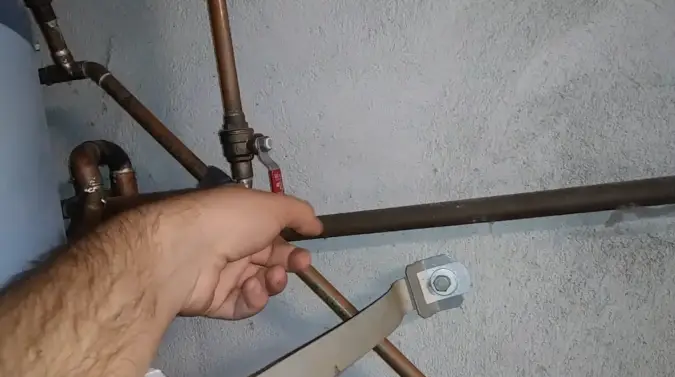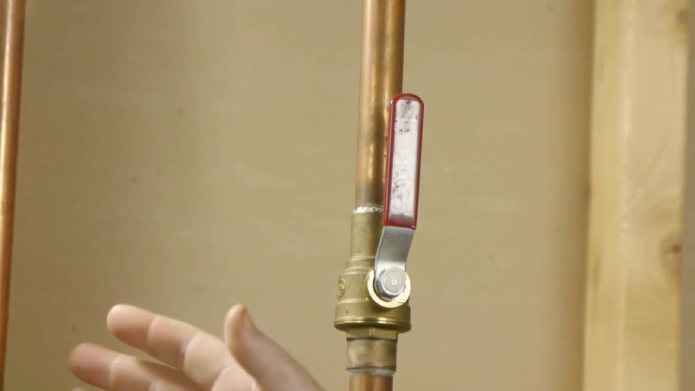Last Updated on April 3, 2023
Ball valves regulate and control liquids and gases in many industrial applications, from water treatment plants to oil refineries. Even though these devices are designed for durability and reliability, they can fail.
When plant operators, engineers, and maintenance personnel understand why ball valves fail, they can take prompt and effective action, ensuring smooth operations with minimal risks.
There are several reasons for ball valves failing, including dirt and sediment buildup, solvent cement glue, corrosion, wear and tear, improper installation, high velocity, excessive heat, and more.
Let’s explain these reasons in more detail and discuss potential solutions to help prevent and mitigate these problems, ensuring the longevity of ball valves and optimal performance.
Why Do Ball Valves Fail: Reasons Explained

Ball valves play a vital role in controlling fluid flow across various industries and residential settings. Despite their wide-range utility, there are numerous instances when these mechanical devices succumb to failure. The following are some common factors:
01: Corrosion
Corrosion is a key reason for ball valve failure. It occurs when certain materials, such as brass or carbon steel, react with fluids or their surrounding environments. This reaction causes the ball valve’s components to corrode, decreasing functionality and potential leaks.
One solution to combat corrosion is selecting ball valves made of materials less susceptible to corroding, such as stainless steel, in environments with corrosive substances. Also, surface treatments like coatings or plating can be applied to the valve’s components to protect them from corrosion.
Regular inspection and maintenance are also essential in keeping ball valves in good working order. Identifying corrosion signs early on and promptly addressing the issue can prevent more significant problems and valve failures.
02: Wear and Tear
Continuous use of ball valves can lead to wear and tear, affecting the valve’s components, such as the ball, stem, seats, and seals. As these components wear out, the valve may leak or malfunction, posing considerable risk to operations and potentially leading to equipment damage or environmental issues.
To minimize wear and tear, it is crucial to ensure that ball valves are made of high-quality materials designed for specific applications and pressure requirements.
Also, routine maintenance and inspection schedules should be set up to monitor the valve’s condition and promptly replace parts showing signs of wear or damage.
Lubrication is another critical aspect of maintaining ball valves and prolonging their lifespan. Adequate lubrication can reduce friction between the valve’s components, preventing premature wear and improving overall performance.
03: Improper Installation
Improper installation can cause ball valves to malfunction or fail. Misalignment or inappropriate stem tightening can lead to leaks or hinder the valve’s operation. Consequently, this could result in lost productivity, increased maintenance costs, and potential safety hazards.
Following the manufacturer’s guidelines and recommendations is essential to avoid improper installation. This includes adhering to the specified torque values and using the correct tools to install the ball valve.
Utilizing trained and experienced technicians to perform the installation can also guarantee the correct procedures are followed. Regular inspection after installation can help identify issues arising from improper installation.
04: High Velocity

Ball valves can fail due to high fluid velocity, threatening their internal components. The excessive speed of the fluid passing through the valve creates friction and turbulence that can erode the parts of the valve, such as the seals and ball. This erosion can weaken the valve’s structure, leading to leaks or complete failure.
Also, high velocity can result in vibration, further damaging the valve’s components and negatively impacting its performance. As the valve vibrates, mechanical stresses accumulate, causing wear and tear on the internal parts, leading to reduced performance and eventual failure.
Selecting the appropriate valve for the specific application is essential to mitigate the risks associated with high velocity. Consideration should be given to factors such as the type of fluid, the expected flow rate, and the intended operating temperature.
Installing a valve that handles higher velocities can reduce the likelihood of component damage and extend the valve’s operational life. Also, monitoring and controlling the fluid flow rate through the valve can help maintain a safe velocity, preventing excessive erosion or vibration.
05: Excessive Heat
Ball valves are typically designed to operate within a specified temperature range. When exposed to excessive heat, the valve’s internal components, particularly the seals and packing, may become compromised.
This damage can occur either due to the direct impact of high temperatures or through the thermal expansion of materials, which can cause components to distort or lose their sealing capabilities.
To address the challenges posed by excessive heat, selecting a ball valve made from materials that can withstand the temperatures they will be exposed to during operation is crucial.
Specialized high-temperature ball valves are available for applications with temperatures exceeding standard limits. These valves use specially-formulated seals and packing materials that can better tolerate temperature fluctuations.
Inspecting and maintaining your ball valves can also detect and prevent heat exposure issues. Ensuring that seals remain in good condition and replacing them as necessary will help maintain the valve’s performance, even in high-temperature applications.
06: Chemical Compatibility
Incompatibility between the ball valve’s components and the chemicals within the fluid can result in valve failure. Chemical reactions can occur between the fluid and the valve’s materials, leading to corrosion, degradation, or even dissolution of the valve’s components.
This can jeopardize the integrity of the valve, causing it to malfunction or fail altogether.
To prevent chemical compatibility issues, it is essential to thoroughly understand the chemical properties of the fluid being regulated and choose a valve constructed from materials resistant to these chemicals.
This could involve selecting valves made from corrosion-resistant materials, such as stainless steel or certain types of plastic, or using components with specialized coatings.
07: Foreign Materials
Foreign materials, such as dirt or debris, can significantly affect the performance and integrity of ball valves. When these unwanted particles find their way into the valve, they might cause abrasion to the ball and the seats, compromising sealing capabilities.
Ultimately, this can lead to leaks, making the valve ineffective in controlling fluid or gas flow.
To address this issue, it is crucial to ensure the system is free from foreign materials before installing the ball valve. This may involve thoroughly flushing the pipeline and using strainers to remove particles.
Also, choosing a ball valve with features that prevent the ingress of external contaminants, such as a tight sealing mechanism, can help maintain optimal valve performance.
08: Improper Maintenance
Proper and timely maintenance is vital for maximizing the lifespan and efficiency of ball valves. Cleaning and lubricating the valve regularly helps to reduce friction and minimizes the buildup of contaminants. A neglected valve may exhibit increased resistance in operation, potentially leading to valve failure.
To prevent this, it is essential to follow recommended maintenance schedules provided by the valve manufacturer. Regularly inspecting the valve, cleaning, and lubricating the necessary components can significantly reduce the risk of operational issues.
Also, conducting performance tests can help to identify potential problems early, allowing for timely intervention and avoiding costly failures.
What Is the Failure Rate of Ball Valves?

Ball valve failure rate is essential, as it provides valuable insights into their durability and efficiency. According to the specific usage conditions and maintenance practices, the average range of 0.2 to 10 failures per million hours is a reasonable benchmark to use.
It is crucial to note that several factors, including the operating conditions, environment, and quality of materials used in manufacturing the valve, contribute to its overall failure rate.
Appropriate maintenance practices significantly enhance the lifespan of a ball valve, allowing it to function efficiently for as long as possible.
How Do You Know If Your Ball Valves Are Failing?
Detecting a failing ball valve is essential to maintaining a safe and effective system. One of the telling signs of failing ball valves is when they continue to allow upstream pressure to flow through even when in a closed position. This can occur due to damaged seals or problems with the ball itself.
Ineffective seals, often resulting from wear and tear, can contribute to the ball valve’s inability to fully shut off the pressure. Deformed seals may cause leakage, compromising the valve’s performance and overall system integrity.
Periodic examinations of the valve components as part of maintenance routines can help identify signs of wear or damage, enabling swift action to prevent potential failures.
Say Goodbye to Ball Valve Failures

Ball valve failures can be attributed to many reasons, ranging from dirt and sediment buildup to improper installation and excessive heat. But, understanding these causes and preempting them with proper maintenance and installation procedures can significantly reduce the likelihood of valve failure.
To keep your ball valves running well for a long time, you should make sure to pay attention to quality control in production, regularly clean and inspect them, and replace any parts when needed. That way, they will always be in great shape.
So, go ahead and apply this newfound knowledge to protect and prolong the life of your beloved ball valves and make valve failure a thing of the past. Happy plumbing.



